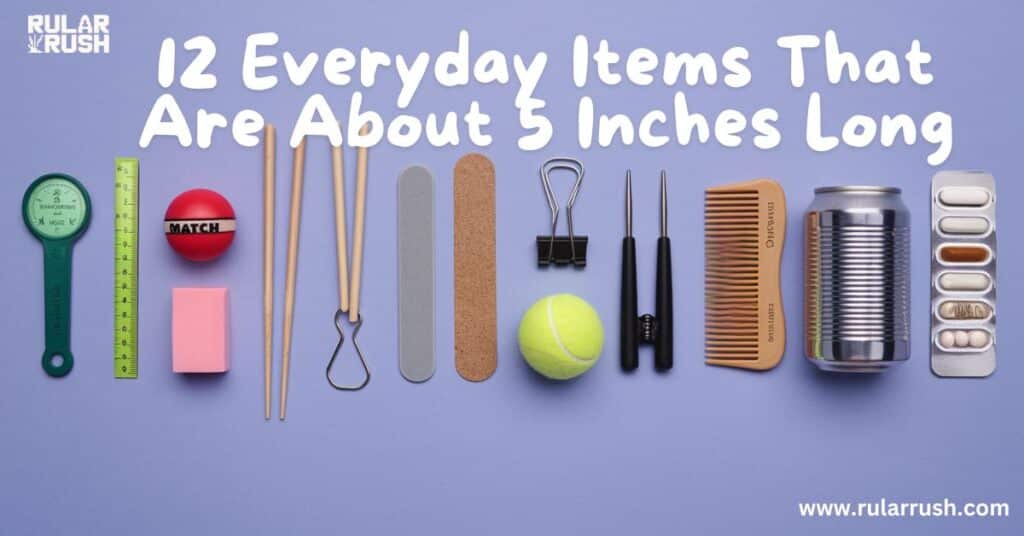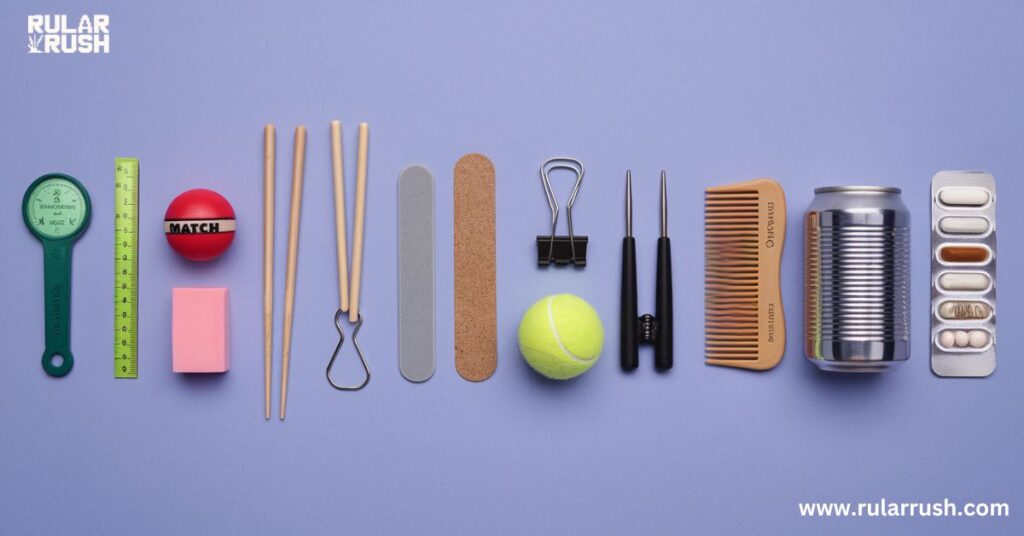
In our daily lives, we’re surrounded by objects of various sizes, but have you ever stopped to consider how many of them measure up to about 5 inches? This seemingly arbitrary length is actually quite common, and understanding it can be surprisingly useful. From quick DIY measurements to improving your spatial awareness, knowing your 5-inch objects can come in handy more often than you might think.
In this comprehensive guide, we’ll explore 12 everyday items that are approximately 5 inches long, delving into their history, uses, and how they can serve as impromptu measuring tools. We’ll also discuss the science behind size perception and provide practical applications for this knowledge. So, let’s dive in and discover the hidden world of 5-inch wonders!
The 5-Inch Standard: A Ubiquitous Measurement
Before we embark on our journey through the land of 5-inch objects, let’s take a moment to appreciate the significance of this particular length. Five inches is a sweet spot in the world of everyday items – it’s long enough to be substantial, yet short enough to fit comfortably in your hand or pocket.
Fun fact: 5 inches is approximately 12.7 centimeters, or about the width of a dollar bill.
In the realm of measurements, 5 inches sits at an interesting crossroads:
- It’s slightly less than half a foot (6 inches)
- It’s about the length of an average adult’s palm
- It’s roughly the diameter of a CD or DVD
This length appears frequently in nature and in human-made objects, making it a useful reference point for estimating sizes in various contexts.
Now, let’s explore our lineup of 5-inch marvels and uncover the hidden utility in these common household items.
1. The Greenback Gauge: U.S. Dollar Bill
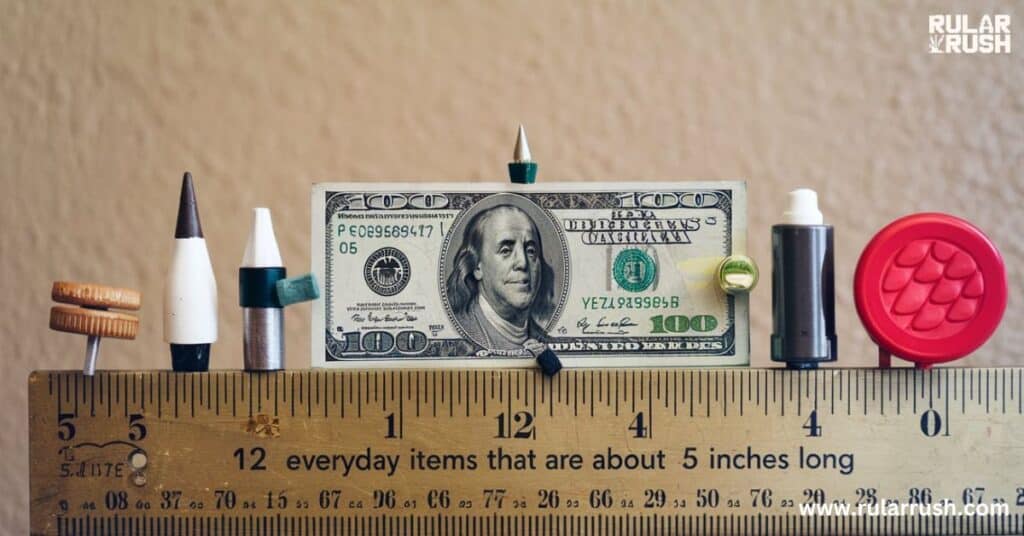
Let’s start with something you probably have in your wallet right now – the humble dollar bill. While not exactly 5 inches, it’s close enough to serve as a handy reference.
Actual dimensions: 6.14 inches long by 2.61 inches wide
The dollar bill’s length makes it an excellent makeshift ruler. Here’s a quick conversion guide:
| Measurement | Dollar Bill Equivalent |
|---|---|
| 5 inches | ~0.81 dollar bills |
| 10 inches | ~1.63 dollar bills |
| 1 foot | ~1.95 dollar bills |
Historical tidbit: The size of U.S. currency hasn’t changed since 1929 when all denominations were standardized to save on production costs. Before this standardization, different denominations had different sizes, with larger values being physically larger.
International comparison: While the U.S. dollar is a good 5-inch reference, not all currencies follow this pattern. For example:
- The Euro: 120-160 mm (4.7-6.3 inches) in length, depending on the denomination
- The British Pound: 135-156 mm (5.3-6.1 inches) in length
- The Japanese Yen: 76-160 mm (3-6.3 inches) in length
Using currency as a measuring tool can be particularly useful when traveling, as it provides a consistent reference point across different measurement systems.
2. Game, Set, Match: Table Tennis Balls

Three standard table tennis balls lined up end-to-end measure almost exactly 5 inches. This makes them a perfect tool for quick measurements, especially if you’re a ping pong enthusiast.
Table tennis ball facts:
- Diameter: 1.57 inches (40mm)
- Circumference: ~4.9 inches
- Weight: 0.095 to 0.100 ounces
Pro tip: Keep a few table tennis balls in your toolbox for those times when you need a quick 5-inch reference.
The evolution of table tennis balls:
- Early 1900s: Balls were made of celluloid and varied in size
- 1926: The International Table Tennis Federation standardized the ball size to 38mm
- 2000: The ball size was increased to 40mm to slow down the game for television viewers
- 2014-2015: Plastic balls were introduced to replace celluloid due to flammability concerns
Table tennis ball colors:
- Orange and white are the only colors allowed in official competitions
- The choice of color is based on visibility against the table and background
Using table tennis balls for measurement can be particularly useful in sports and gaming contexts, where precision is key but traditional measuring tools might not be readily available.
3. Erasing Doubts: Pink Erasers
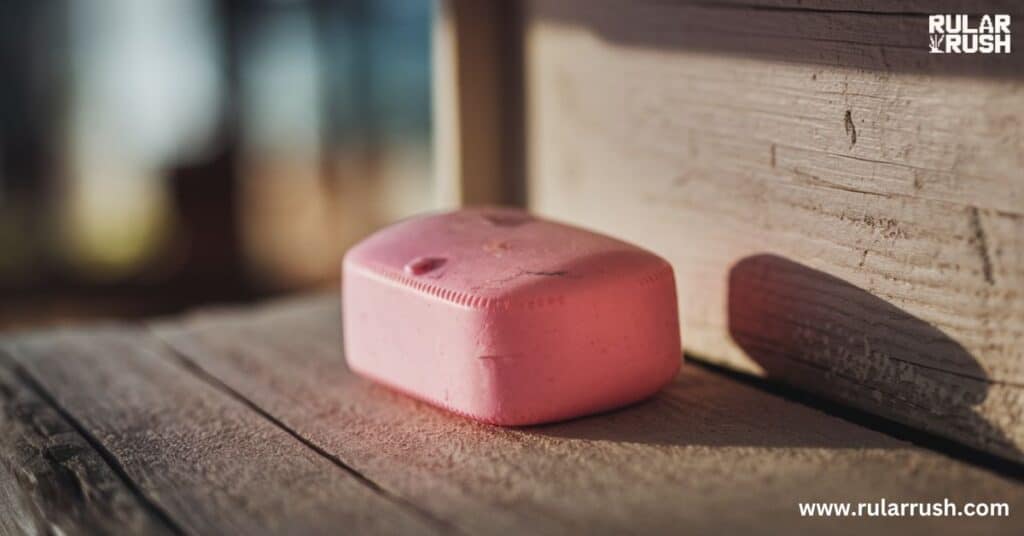
Remember those large pink erasers from school? Two of them lined up end-to-end equal about 5 inches. This makes them another handy household measuring tool.
Standard pink eraser dimensions:
- Length: 2.5 inches
- Width: 1 inch
- Height: 0.5 inches
Fun fact: The typical pink eraser can erase a pencil line about 1,000 feet long!
The history of erasers:
- 1770: Joseph Priestley discovers that rubber can erase pencil marks
- 1839: Charles Goodyear invents vulcanized rubber, making erasers more durable
- 1858: Hymen Lipman patents the pencil with an attached eraser
- Early 1900s: Pink erasers become popular due to the addition of pumice for better erasing
Types of erasers:
- Rubber erasers (like the pink ones)
- Vinyl erasers (white, less abrasive)
- Kneaded erasers (moldable, used by artists)
- Electric erasers (for precision erasing)
Using erasers as a measurement tool can be particularly useful in educational settings, where they’re readily available and their standardized size makes them a reliable reference point.
4. Eastern Ingenuity: Chopsticks

Half the length of a standard pair of chopsticks is approximately 5 inches. This makes chopsticks not just a utensil, but also a potential measuring tool.
Chopstick lengths across cultures:
- Chinese: 9-10 inches
- Japanese: 7-8 inches
- Korean: 8-9 inches
Cultural insight: In many East Asian countries, it’s considered impolite to use chopsticks as measuring tools or to play with them during meals.
The history of chopsticks:
- Ancient times: Used as cooking tools to retrieve food from pots
- 400-500 CE: Begin to be used as eating utensils in China
- 700 CE: Spread to Japan and Korea
- Present day: Used by over 1.5 billion people worldwide
Chopstick materials:
- Bamboo (traditional and eco-friendly)
- Wood (various types, often lacquered)
- Plastic (common in casual settings)
- Metal (durable, often used for cooking)
- Ivory or jade (luxury items, now less common due to ethical concerns)
Using chopsticks as a measurement tool can be particularly useful in cooking and food presentation, where precise measurements are often needed but traditional measuring tools might disrupt the creative process.
5. Office Supply Surprise: Paper Clips
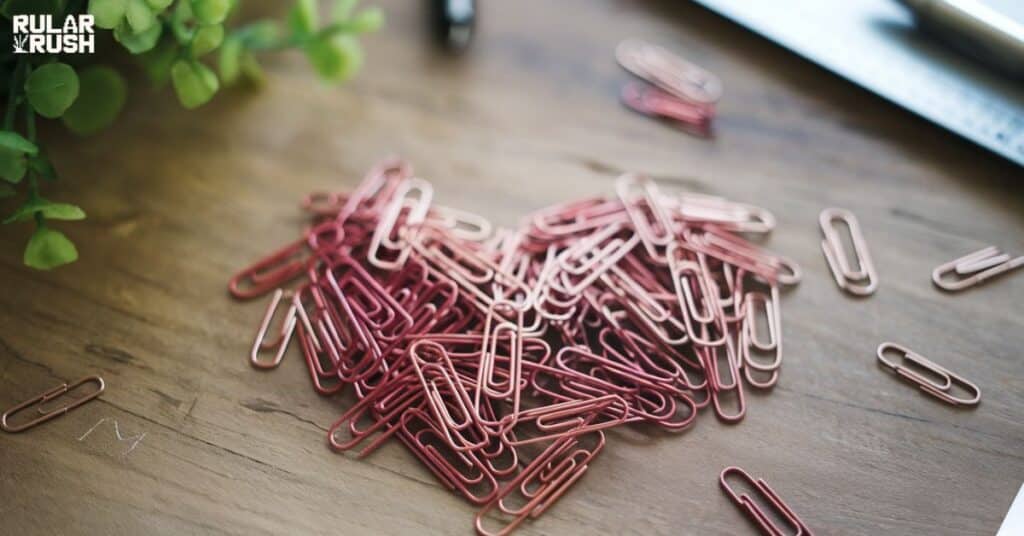
While individual paper clips are much smaller, a chain of about 5 standard paper clips laid end-to-end measures close to 5 inches.
Paper clip facts:
- Standard size: 1 inch long
- Invented in: 1899 by Johan Vaaler
- Annual global production: 11 billion
DIY tip: Create a quick 5-inch ruler by taping 5 paper clips together in a straight line.
The evolution of paper clips:
- Early 1800s: Straight pins used to hold papers together
- 1867: Samuel B. Fay patents a bendable wire fastener
- 1899: Johan Vaaler patents the modern paper clip design
- 1934: William Middlebrook patents the paper clip making machine
Unusual uses for paper clips:
- Emergency zipper pull
- Bookmark
- Cable organizer
- Makeshift hook
- Reset button for electronics
Using paper clips as a measurement tool can be particularly useful in office settings, where they’re readily available and their uniform size makes them a reliable reference point for small measurements.
6. Literary Measure: Bookmarks
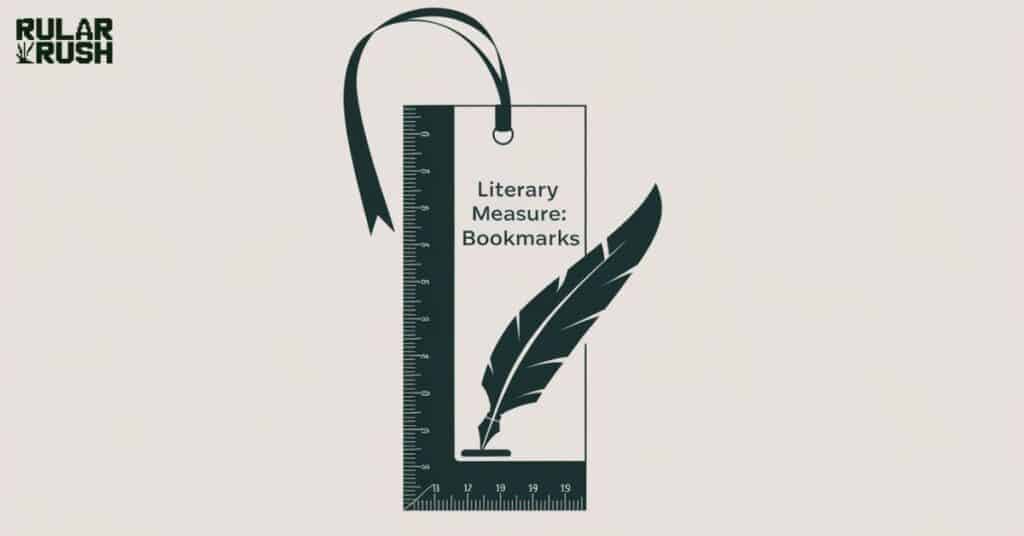
Many standard bookmarks are designed to be about 5 inches long, making them perfect for more than just keeping your place in a book.
Bookmark trivia:
- Earliest known bookmark: 6th century
- Material: Leather
- Found in: Coptic monastery near Sohag, Egypt
Reader’s hack: Use a 5-inch bookmark as a quick reference when measuring book dimensions for online selling or shipping.
Types of bookmarks:
- Ribbon bookmarks (often built into hardcover books)
- Magnetic bookmarks (clip onto pages)
- Corner bookmarks (slide over the corner of a page)
- Decorative bookmarks (often made of metal or beaded)
- Digital bookmarks (used in e-readers)
The cultural significance of bookmarks:
- In Victorian England, bookmarks were popular gifts and often had sentimental value
- In Japan, paper bookmarks called “shiori” have been used since the Heian period (794-1185 CE)
- Some religions use bookmarks in sacred texts to mark important passages
Using bookmarks as a measurement tool can be particularly useful in literary contexts, such as book binding, paper crafts, or even in libraries for quick shelf measurements.
7. Grooming Tool: Nail Files
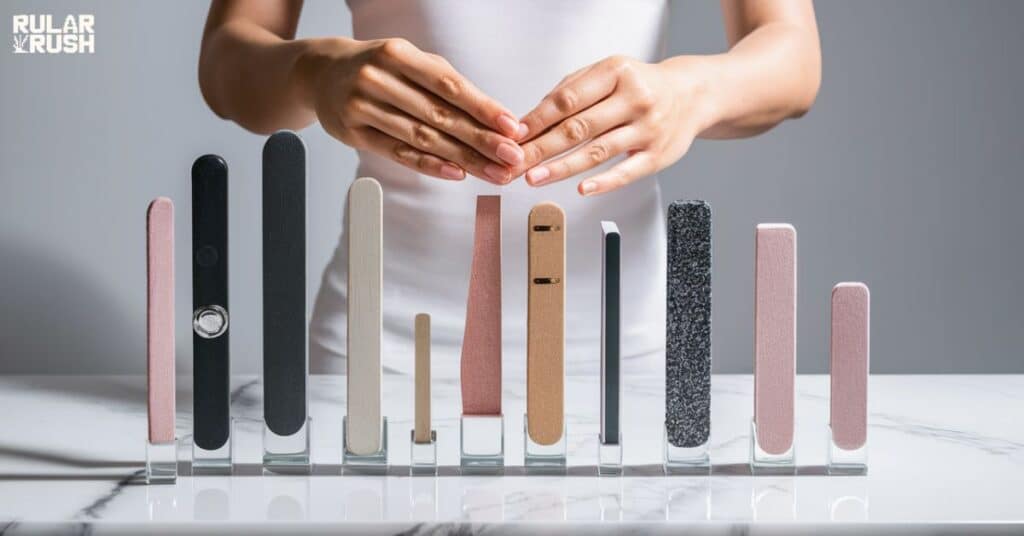
The average nail file is about 5 inches long, providing a convenient measuring tool that many people carry in their purse or bathroom drawer.
Nail file evolution:
- Ancient times: Pumice stones and sand
- 19th century: Orange wood sticks
- 1910: Emery boards
- Modern day: Metal, glass, and crystal files
Pro tip: Use the length of your nail file to quickly estimate the size of small objects or spaces.
Types of nail files:
- Emery boards (made of cardboard with abrasive emery paper)
- Metal files (often with a diamond dust coating)
- Glass files (durable and easy to clean)
- Ceramic files (gentle on natural nails)
Nail file grits:
- Coarse (80-100 grit): For shaping artificial nails
- Medium (180-220 grit): For shaping natural nails
- Fine (240-600 grit): For smoothing and finishing
- Ultra-fine (600-2400 grit): For buffing and polishing
Using nail files as a measurement tool can be particularly useful in beauty and fashion contexts, where precise measurements might be needed for nail art or jewelry sizing.
8. Tech Measure: Router Antennas

Many Wi-Fi router antennas are designed to be about 5 inches long. This standardization helps optimize signal strength and coverage.
Why 5 inches matters for Wi-Fi:
- Wavelength: 2.4 GHz Wi-Fi has a wavelength of about 4.9 inches
- Antenna theory: Half-wavelength antennas (about 2.45 inches) are most efficient
- Practical design: 5-inch antennas balance efficiency and aesthetics
Router placement tip: Use the antenna length as a guide when positioning your router. Keep it at least one antenna length away from walls for better signal propagation.
Types of Wi-Fi antennas:
- Dipole antennas (the common stick-like antennas)
- Patch antennas (flat, often internal)
- Yagi antennas (directional, for long-range)
- Parabolic grid antennas (high-gain, for very long range)
The evolution of Wi-Fi technology:
- 1997: 802.11 standard introduced with speeds up to 2 Mbps
- 1999: 802.11b offers speeds up to 11 Mbps
- 2009: 802.11n introduces MIMO technology
- 2019: Wi-Fi 6 (802.11ax) launched with speeds up to 9.6 Gbps
Using router antennas as a measurement tool can be particularly useful in tech setups, helping to optimize device placement and signal strength in home or office networks.
9. Sporty Sizing: Tennis Balls
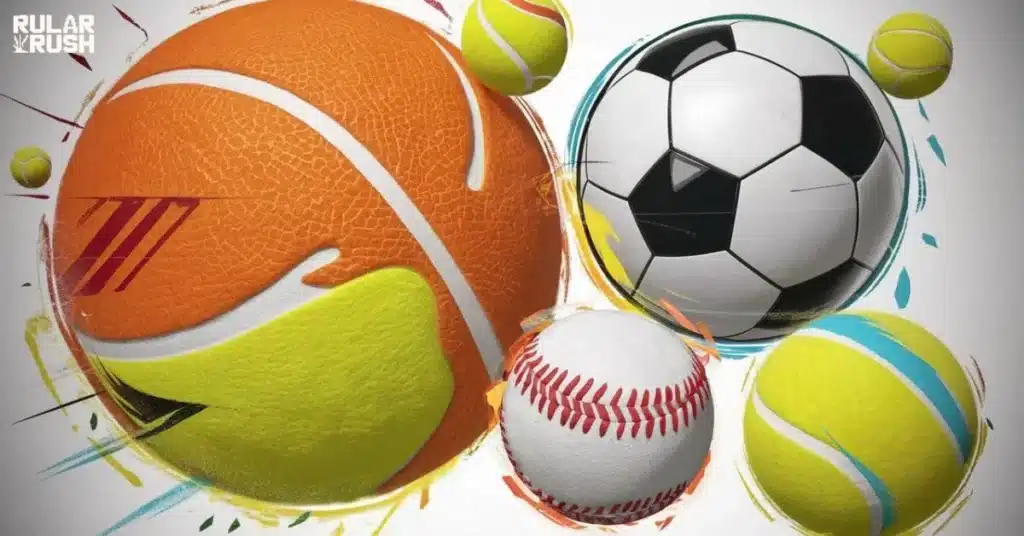
While a single tennis ball isn’t 5 inches, two standard tennis balls placed side by side come very close to this length.
Tennis ball specifications:
- Diameter: 2.57-2.70 inches
- Circumference: 8.1-8.5 inches
- Weight: 1.975-2.095 ounces
Sports trivia: Tennis balls are the only yellow balls used in professional sports.
The history of tennis balls:
- 12th-13th century: Balls made of leather strips filled with wool or hair
- 1480: Wooden frame racquets introduced, requiring softer balls
- 1870s: Vulcanized rubber allows for bouncy, air-filled balls
- 1972: Optic yellow balls introduced for better visibility on TV
Tennis ball colors:
- Professional tournaments: Optic yellow (often called “tennis ball yellow”)
- Wimbledon (until 1986): White
- Recreational use: Various colors including pink, orange, and green
Using tennis balls as a measurement tool can be particularly useful in sports contexts, helping to estimate distances on court or field without the need for formal measuring equipment.
10. Styling Measure: Hair Combs

Many standard hair combs are designed to be about 5 inches long, making them another everyday item that can double as a measuring tool.
Comb history highlights:
- Oldest known comb: 5500 years old (found in Persia)
- Material: Animal bone
- Modern materials: Plastic, metal, wood
Styling tip: Use your 5-inch comb to measure and section hair evenly when cutting or styling.
Types of combs:
- Wide-tooth combs (for detangling)
- Fine-tooth combs (for styling and removing lice)
- Rat-tail combs (for sectioning and teasing)
- Barber combs (for cutting)
- Electric combs (for straightening)
Comb materials and their benefits:
- Plastic: Affordable and lightweight
- Metal: Durable and heat-resistant
- Wood: Anti-static and gentle on hair
- Horn: Distributes natural oils and reduces frizz
Using combs as a measurement tool can be particularly useful in hairstyling contexts, helping to ensure even cuts and consistent styling across different sections of hair.
11. Refreshing Reference: Standard Soda Can

While not exactly 5 inches, a standard 12 oz soda can stands at 4.83 inches tall, making it a close approximation to our 5-inch benchmark.
Soda can facts:
- Diameter: 2.6 inches
- Volume: 12 fluid ounces (355 ml)
- Introduced: 1959 by Coors Brewing Company
Eco-friendly reminder: Aluminum cans are 100% recyclable and can be recycled indefinitely without loss of quality.
The evolution of soda cans:
- 1935: First canned beer introduced
- 1959: First aluminum can for beverages
- 1963: Pull-tab introduced
- 1975: Stay-on tab invented, reducing litter
- Present day: Various sizes and shapes, but standard size remains popular
Soda can trivia:
- The average American consumes 364 cans of soda per year
- It takes about 60 days for a recycled can to go from the recycling bin back to the store shelf
- The first soda cans were made of steel and had to be opened with a can opener
Using soda cans as a measurement tool can be particularly useful in everyday situations, providing a common reference point for estimating sizes of various objects.
12. Health Helper: Pill Organizers

Many weekly pill organizers are designed to be about 5 inches long, with each day’s compartment measuring roughly 1 inch.
Pill organizer benefits:
- Improved medication adherence
- Reduced risk of dosage errors
- Easy tracking of taken/missed doses
- Convenient for travel
Health tip: Use a 5-inch pill organizer as a visual reminder of your weekly medication schedule.
Types of pill organizers:
- Daily organizers
- Weekly organizers
- Monthly organizers
- AM/PM organizers
- Travel organizers
The importance of medication adherence:
- 50% of patients don’t take medications as prescribed
- Poor adherence leads to 125,000 deaths annually in the US
- Medication non-adherence costs the US healthcare system up to $300 billion annually
Using pill organizers as a measurement tool can be particularly useful in healthcare contexts, helping to estimate doses or sizes of medical supplies when precise measuring tools aren’t available.
The Science of Size Perception
Now that we’ve explored these everyday 5-inch items, let’s delve into why we often misjudge the size of familiar objects.
Factors affecting size perception:
- Context: Surrounding objects can make things appear larger or smaller
- Familiarity: We tend to estimate familiar objects more accurately
- Expectations: Preconceived notions can skew our perception
- Viewpoint: Angle and distance affect apparent size
Improve your estimation skills:
- Practice comparing objects to known reference sizes
- Use multiple viewpoints when estimating
- Be aware of contextual factors that might skew perception
The Ebbinghaus Illusion: This famous optical illusion demonstrates how context affects size perception. Two circles of identical size appear different when surrounded by larger or smaller circles.
Size constancy: Our brains automatically adjust for distance when perceiving size. This is why the moon appears larger on the horizon, even though its angular size remains constant.
Cross-cultural differences: Research has shown that people from different cultures may perceive size differently. For example, people from cultures that emphasize context over individual objects may be less susceptible to certain size illusions.
Understanding these principles can help you become more accurate in your size estimations and more aware of how your perception might be influenced by various factors.
Practical Applications of 5-Inch Knowledge
Understanding the size of common 5-inch objects can be surprisingly useful in everyday life. Here are some practical applications:
- Quick measurements: Use these items for rough estimates when a ruler isn’t handy
- Example: Estimating the size of a package using dollar bills
- DIY projects: Easily visualize and plan small-scale crafts or repairs
- Example: Using a comb to measure and mark drilling points for shelf brackets
- Online shopping: Better gauge product sizes when browsing online
- Example: Comparing a new phone’s dimensions to a soda can
- Teaching tool: Help children understand measurements using familiar objects
- Example: Using table tennis balls to explain diameter and circumference
- Packing efficiently: Estimate space requirements for small items when traveling or moving
- Example: Using a pill organizer to gauge how many small accessories will fit in a travel pouch
- Photography: Improve composition by understanding common object sizes
- Example: Using a 5-inch object for scale in close-up nature photography
- Cooking: Estimate portion sizes or ingredient amounts
- Example: Using chopstick length to gauge pasta serving sizes
- Gardening: Plan plant spacing and pot sizes
- Example: Using a nail file to measure seed planting depth
- Fashion: Estimate accessory sizes when shopping online
- Home improvement: Quick estimates for small repairs or renovations
- Example: Using paper clips to estimate the length of a replacement drawer pull
Case Study: The 5-Inch Rule in Design
Many designers and architects use the “5-inch rule” when creating user-friendly spaces. This rule suggests that commonly used items should be within 5 inches of where they’re needed.
For example:
- Kitchen design: Keeping utensils within 5 inches of cooking areas
- Office layout: Positioning frequently used items within 5 inches of the primary work zone
- Bathroom organization: Placing toiletries within 5 inches of where they’re used
This rule, based on the natural reach of human hands, demonstrates how our 5-inch everyday items can influence efficient design.
Real-world application: IKEA, the Swedish furniture giant, often incorporates this principle in their kitchen designs. Their modular systems are designed to keep frequently used items within easy reach, improving efficiency and user experience.
Ergonomic benefits: The 5-inch rule helps reduce unnecessary reaching and stretching, potentially lowering the risk of repetitive strain injuries in workplaces.
Accessibility considerations: For individuals with limited mobility, adhering to the 5-inch rule can significantly improve independence and quality of life.
The 5-Inch Standard in Nature and Science
Interestingly, the 5-inch length appears frequently in nature and scientific contexts:
- Biology: Many small animals and plants fall around the 5-inch mark
- Example: The average length of a honeybee is about 0.5-0.6 inches, so 9-10 honeybees in a line would be about 5 inches
- Meteorology: Weather balloons are often released when clouds are at a height where the pressure is 500 millibars, which is sometimes called the “5-inch level” (referring to inches of mercury on a barometer)
- Astronomy: The rings of Saturn, when viewed from Earth, span about 5 inches at arm’s length
- Geology: The rate of tectonic plate movement is often measured in centimeters per year, with 5 inches representing a significant shift over time
- Marine biology: Many shellfish, like clams and oysters, are considered market-size when they reach about 5 inches in length
Understanding these natural occurrences of the 5-inch standard can help us appreciate the interconnectedness of everyday objects, nature, and scientific principles.
Quotes from Experts
“Understanding common object sizes, like the 5-inch standard, can significantly improve spatial awareness and estimation skills.” – Dr. Sarah Johnson, Cognitive Psychologist
“In product design, we often use everyday 5-inch items as reference points. It helps create intuitive, user-friendly products.” – Mark Thompson, Industrial Designer
“The 5-inch rule in ergonomics has revolutionized workspace efficiency. It’s a simple concept with profound impact.” – Dr. Emily Chen, Ergonomics Specialist
“In archaeology, knowing the size of common modern objects helps us better understand and contextualize ancient artifacts.” – Professor James Williams, Archaeologist
These expert opinions highlight the widespread relevance of understanding common object sizes across various fields and disciplines.
Conclusion: The Power of Everyday Measurements
As we’ve discovered, 5-inch objects are all around us, quietly serving as potential measuring tools and reference points. From the dollar bill in your wallet to the soda can in your fridge, these items offer a tangible way to understand and estimate sizes in our daily lives.
By becoming more aware of these common 5-inch objects, you can:
- Improve your estimation skills
- Make quick measurements without tools
- Gain a better understanding of product sizes when shopping
- Teach others about measurements using relatable examples
- Enhance your spatial awareness and design thinking
- Apply this knowledge in various professional and personal contexts
Remember, the world is full of hidden yardsticks. All it takes is a keen eye and a bit of knowledge to unlock their potential. Whether you’re a designer, educator, DIY enthusiast, or simply someone who appreciates the hidden patterns in everyday life, understanding the 5-inch standard can provide a new perspective on the world around you.
So the next time you need a quick 5-inch reference, just look around – chances are, one of these everyday items is within reach. And who knows? You might just start seeing the world in a whole new way, five inches at a time.
must read :https://rularrush.com/things-that-are-10-meters-long-big/

Elizabeth is an experienced blogger at “Rular Rush,” specializing in delivering precise and insightful content on various measurement topics. With a passion for simplifying complex concepts, she brings clarity and depth to each post, making technical information easy to understand for readers worldwide.

